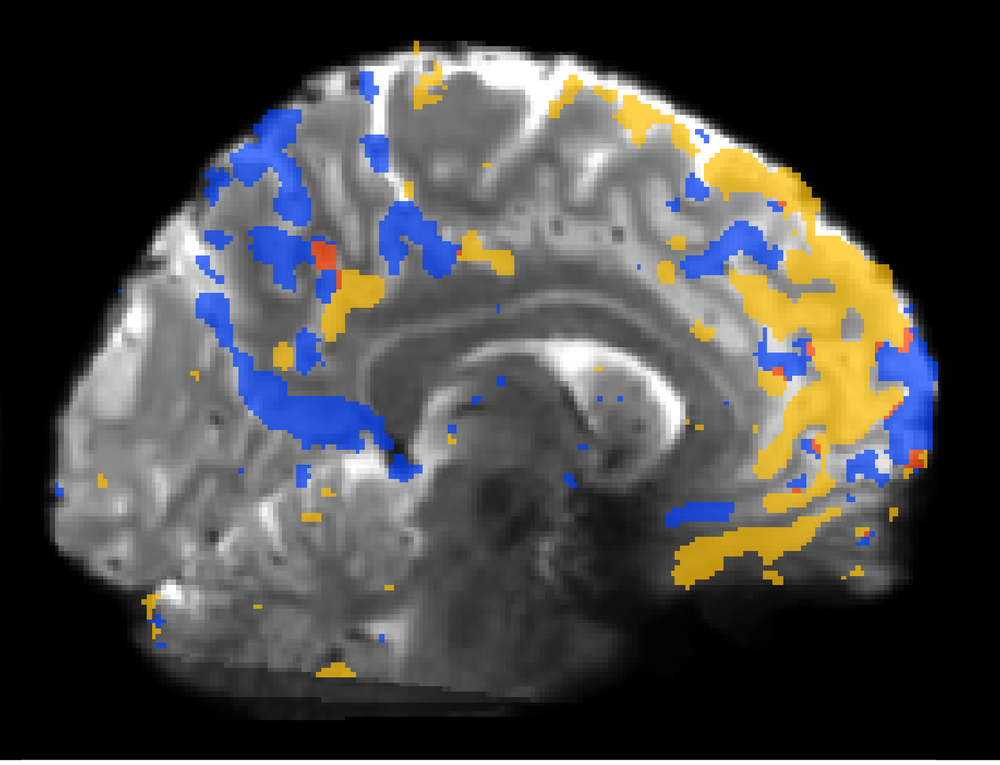Research
The human brain contains a mosaic of large-scale networks — distributed but interconnected regions that work together and exhibit coordinated activity. One hypothesis is that these networks form through a process of specialization, where neurons organize into regions and strengthen specific connections in a way that facilitates information processing for a given function.
A prominent example is a left-lateralized distributed network that is specialized for language; others include two distributed networks that show increased activity during internally oriented processes such as episodic memory retrieval and theory-of-mind thinking. A striking feature is that these different networks share the same broad spatial organization, containing side by side regions in multiple cortical zones, resulting in the appearance of parallel networks.
In the Human Cognitive Neuroscience Lab (Braga Lab), we are investigating these brain networks. What cognitive functions are they specialized for? What insights can we make about the origin and organization of the networks using high-resolution individual-focused imaging techniques? How do the networks interact and compete during information processing? Can we define networks within individual patients and use the maps to improve surgical and stimulation-based treatments?
Network mapping within individuals
Like a fingerprint, every brain is unique. When we respect the uniqueness of a brain’s anatomy, we can better resolve the complex organization of the functional regions it contains. In our research, we use high-resolution functional MR imaging techniques that can define functional regions within the context of an individual’s idiosyncratic anatomy. The networks are often closely situated within the same sulci, highlighting the need for precise and high-resolution approaches to brain imaging.
Specialization of distributed networks
By resolving brain organization within individuals, we can separate juxtaposed functional regions and determine whether they are specialized for separate functions. We showed that, when defined within individuals using functional connectivity, a left-lateralized network corresponds closely and selectively with regions showing activation during a language task. This suggests that the distributed networks specialize at the level of the entire network, rather than individual regions. Further it shows how different networks are specialized for different functions, despite being in close proximity to one another throughout the brain.
High-frequency interactions between networks
Although the distributed networks may be specialized for different functions, different specialized brain regions must work together to enable effective behavior. To adequately characterize these interactions requires techniques with sufficient spatial and temporal resolution to sample from closely neighboring functional regions at high frequency. We are developing techniques to combine intracranial recordings and stimulation with individual-defined network maps with millimeter precision, to allow us to study large-scale network interactions in greater depth.



